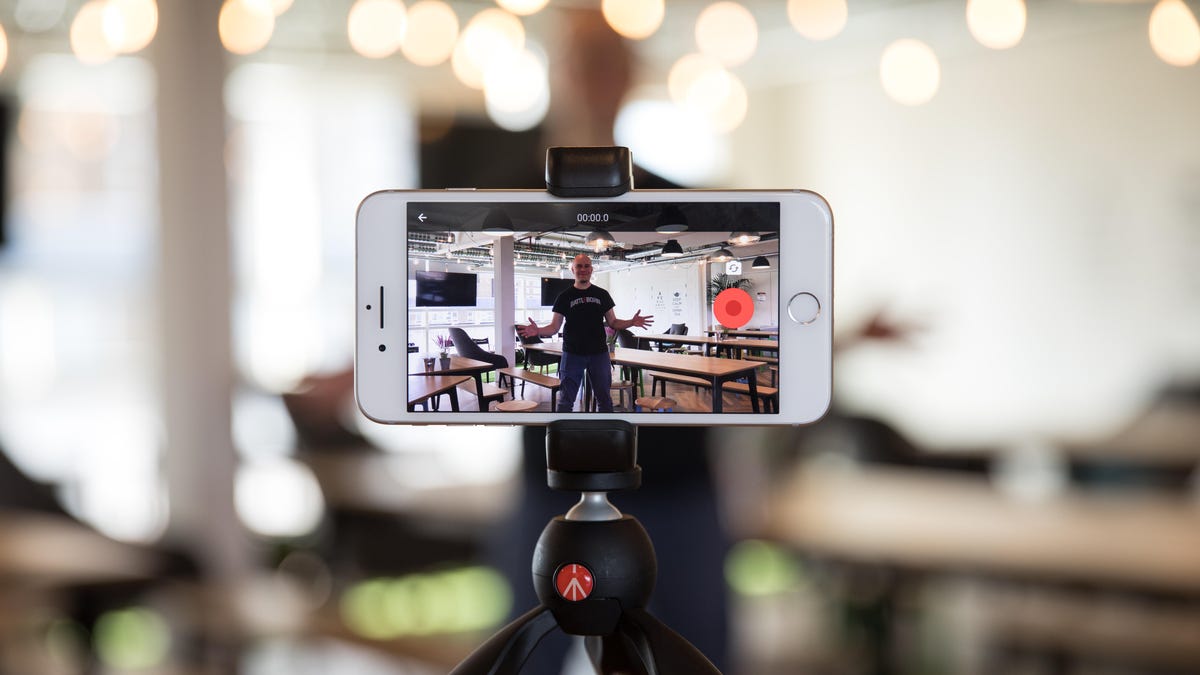Livestreaming: Your audience awaits
Welcome to the world of livestreaming, where anyone from a home cook to a DJ can claim internet fame.

Walking into Tomás Puig's San Francisco apartment, I notice something is a little unusual.
There are three cameras in the kitchen and what looks to be a TV switcher sitting against the wall. Rather than hosting a handful of guests for dinner, twice a week Tomás opens his home to thousands who watch his cooking show on Facebook Live.
"Tomás' Test Kitchen" teaches people how to cook in real time without the "here's one I prepared earlier" trickery. Timid or first-time home cooks can watch techniques and follow along at home.
"It's more like old-school broadcast Julia Child than anything else," Tomás says as he's checking the equipment for that evening's show.
As it turns out, Child is the ideal comparison point. Just search YouTube to watch her flip a potato pancake only for it to end up as potato mush. Child owned such errors, saying in the case of the pancake that she didn't have the courage to do it the way she should have.
You'd struggle to find a contemporary TV chef who would admit the same. But in this test kitchen, it's OK to admit when things go wrong because that's what happens in the real world.
Everyone's doing it
Big media companies are investing heavily in making content for live platforms, but everyday broadcasters are accessing equally large audiences by creating engaging content. According to Facebook, one in every five videos on its platform is a live broadcast. People from snake wranglers to makeup artists can ply their trade, often to viral success. Remember Chewbacca Mom? She got her big break on Facebook Live.
Some even make livestreaming their job. Stay-at-home mom Samantha broadcasts her gaming sessions under the alias Just_Seum on Twitch, earning enough from donations to help support her family. "It brings communities in where you can kind of get to know the people who are watching you at the same time as you are creating your content," she says.
Milk N Cooks, the DJ duo of identical twins Paul and James McElwain, stream sets and give feedback to other musicians on Facebook Live. The end goal is to be "self-sustaining, not have to be dependent on boosting posts or running advertising," says Paul.
How they go live
Anyone can start streaming by holding up a phone. Once you start adding in multiple camera angles or screen-in-screen options for gaming, it gets more complex.
Samantha started small with her Xbox One and Microsoft Kinect but now has a dedicated PC and webcam. Milk N Cooks use OBS Studio, open-source software for streaming. They have a Samson Go Mic and a Logitech webcam to capture their set.
"Tomás' Test Kitchen" is even more elaborate. "From what we know, we are the only multicamera live cooking show in existence right now that actually produces biweekly," Tomás says. He hosts and cooks alongside a guest chef. Producer Felicia Williams oversees recordings. Brown Hughes is director of production and reads out comments during the show.
Three Sony A7S cameras capture multiple perspectives: a wide main shot, an overhead for food preparation and a side shot. Combined with the warm glow from Ikea track lights, an old Leica lens on the main camera ensures the kitchen doesn't look like a sterile film set.
Each camera produces a 4K stream fed into a Blackmagic ATEM Production Studio switcher while Williams uses an iPad app to switch camera angles. An Atmos box records and downgrades the stream to 1080p; then it is sent through two HDMI splitting boxes and out through encoders, which convert the video into a format ready for Facebook.
Behind the scenes at "Tomás' Test Kitchen."
Telling the story
Ten seconds before "Tomás' Test Kitchen" goes live, the room goes silent as a timer counts down to zero. Tomás springs into action and wastes no time by jumping straight to the cooking. Unlike a traditional TV show, there's no real time constraint on live broadcasts so it's not uncommon to see a stream running for hours at a time.
"Longer streams allow you to reach out to different people in all different time zones," says Samantha. When you stream is also important to maximizing viewers, with her late-night gaming sessions from midnight to 5 a.m. attracting a bigger audience than the more saturated 7:30 p.m. time slot.
"On Facebook, people will watch our shows [after we finish]," says Tomás, with replays gathering between 2,000 and 4,000 viewers.
Milk N Cooks have a dedicated audience of an average of 80 to 100 people who watch at least an hour each week, with many more dropping in over the course of their sets. But they caution against going live just for the sake of it. "Stream with a purpose … make sure that you're enjoying yourself and you're natural and relaxed," says James.
Daniel Danker, product director for Facebook Live, says interactivity is key to a successful broadcast. "People comment more than 10 times more on live videos than nonlive videos, so interacting with your audience by responding to comments, or even inviting guests into the broadcast with you, can help viewers feel like they're really a part of the experience."
Even though short-form video on platforms like Snapchat caters to modern attention spans, Tomás reckons viewers will always have an appetite for real-time storytelling.
"There's something very immediate and authentic about that that can't be reproduced in any other way," he says as the hourlong broadcast finishes up for the night. "I don't know many people who are saying, 'That one 60-second Tasty video, it changed my life!'"
This story appears in the fall 2017 edition of CNET Magazine. For other magazine stories, click here.
The Smartest Stuff: Innovators are thinking up new ways to make you, and the things around you, smarter.
iHate: CNET looks at how intolerance is taking over the internet.

